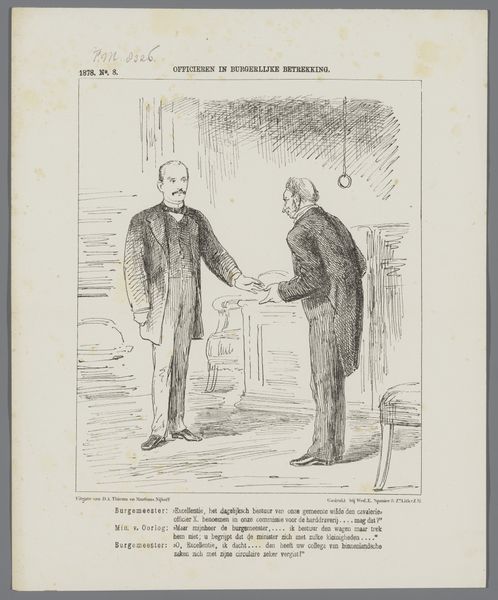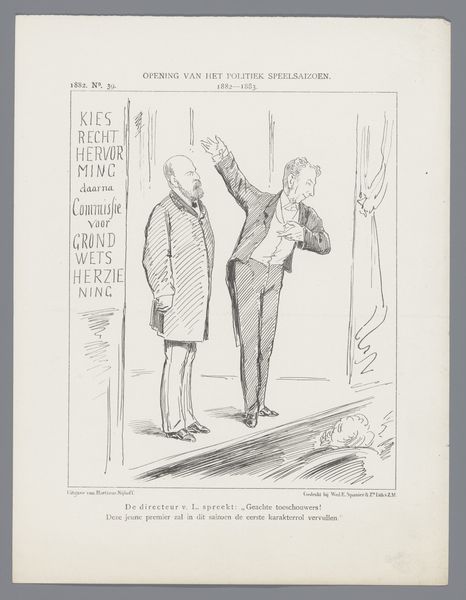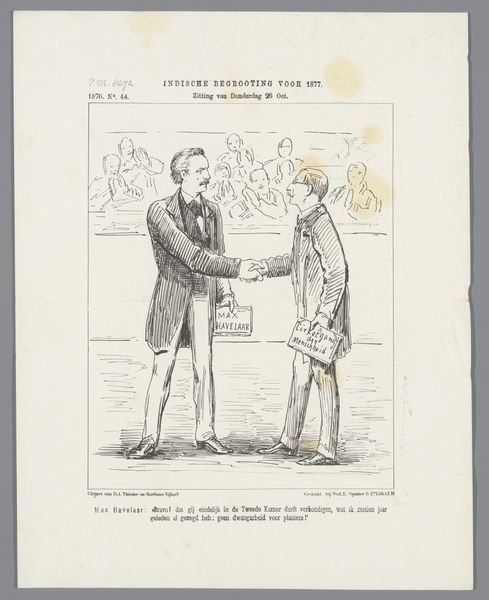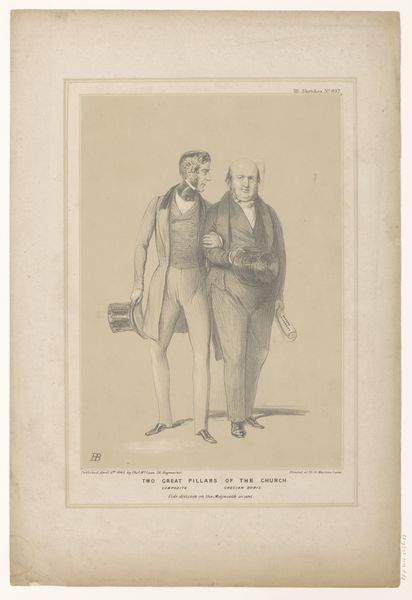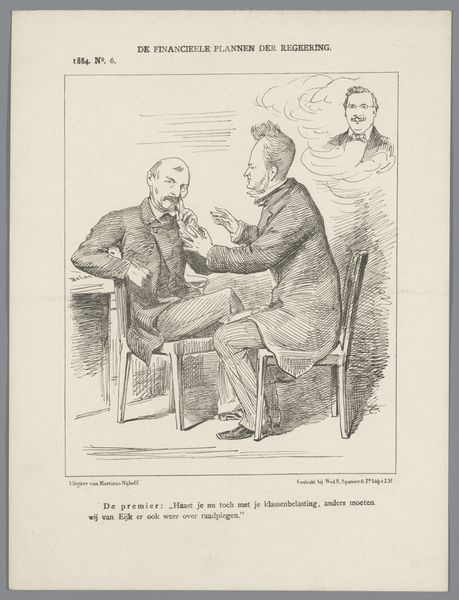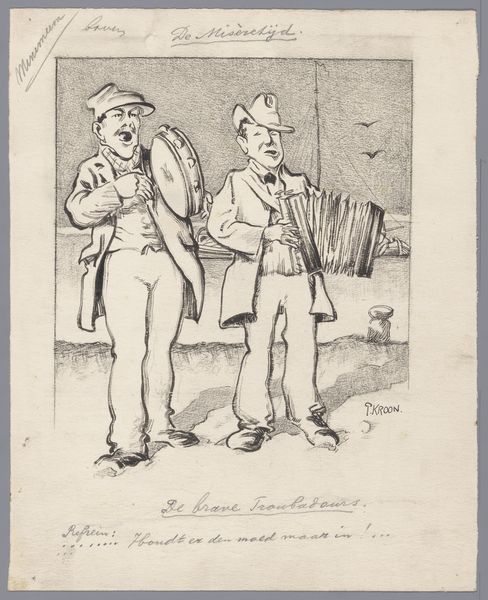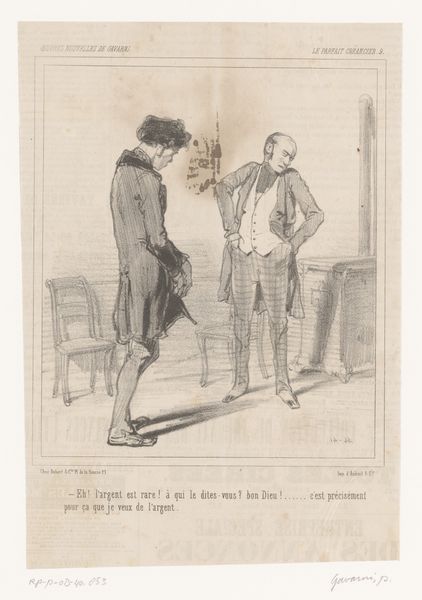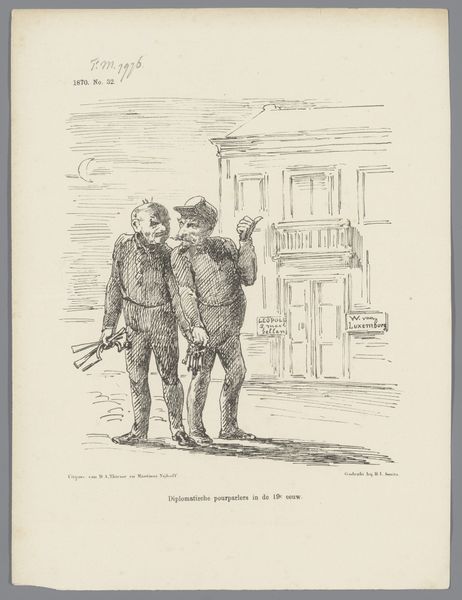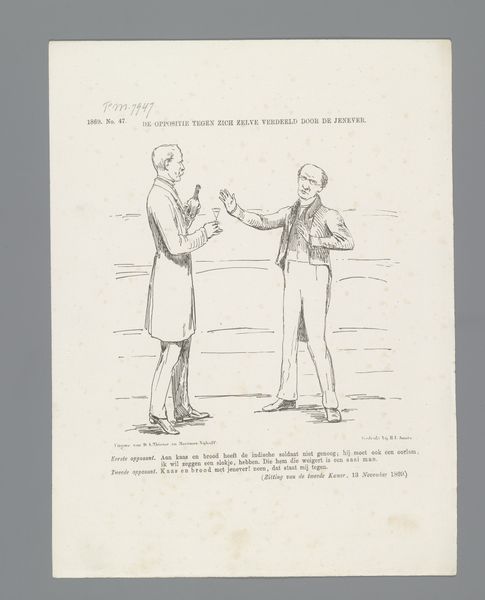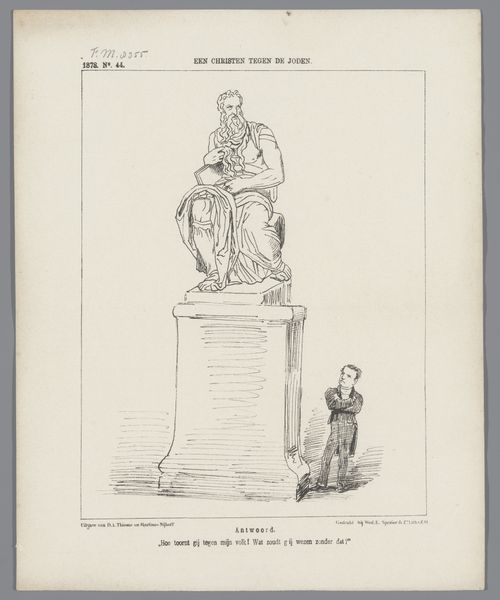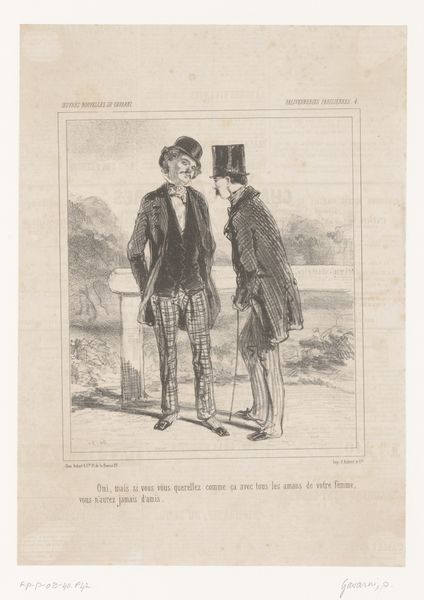
Spotprent over de politieke nasleep van het Billiton-schandaal, 1883 1883
0:00
0:00
drawing, print
#
drawing
#
comic strip sketch
#
aged paper
#
narrative-art
# print
#
caricature
#
sketch book
#
personal journal design
#
personal sketchbook
#
idea generation sketch
#
sketchwork
#
sketchbook drawing
#
storyboard and sketchbook work
#
sketchbook art
Dimensions: height 275 mm, width 215 mm
Copyright: Rijks Museum: Open Domain
Curator: This is a print from 1883 by Johan Michaël Schmidt Crans titled "Spotprent over de politieke nasleep van het Billiton-schandaal," which translates to, "Cartoon about the political aftermath of the Billiton scandal." Quite a mouthful, isn’t it? Editor: My initial thought? Resignation. These two men, linked and weighed down, have an air of weary acceptance about them. You can feel the burden they are carrying. Curator: Precisely. The "Billiton Tin" block chained to their feet symbolizes the scandal that embroiled them. Visually, notice how Crans uses a relatively simple linework drawing style to convey complex political commentary. The crosshatching adds depth to their figures, giving them a solid presence, even in their defeat. Editor: And that chain isn't just connecting them, it's connecting them to the weight of that text, "Billiton Tin." It is a classic example of how the formal qualities become inseparable from the content itself; this work wouldn’t communicate without it. I think the artist used fairly realistic representations of them both; their faces are individualized enough that it encourages further analysis. Curator: Well, in my mind that grounded realism heightens the emotional punch! Crans understood that caricatures could only go so far. It is how those formal constraints amplify a more heartfelt reaction within us, to political disillusionment and corruption that maybe rings as true now as it did then. I've always been fond of its satirical nature and raw human emotion amidst political commentary, but how do you read it, formally? Editor: Absolutely. Consider how Crans manipulates the negative space. The emptiness around the figures isolates them, underscoring their vulnerability and lack of support. Semiotically, the image operates through established conventions of political caricature but infuses it with unique personal expression. Curator: I feel that political art at its best always resonates beyond its immediate context and is both about then, and very much about now! Editor: Agreed. The visual tension created by the weight and the individuals’ stance underscores themes of accountability.
Comments
No comments
Be the first to comment and join the conversation on the ultimate creative platform.

